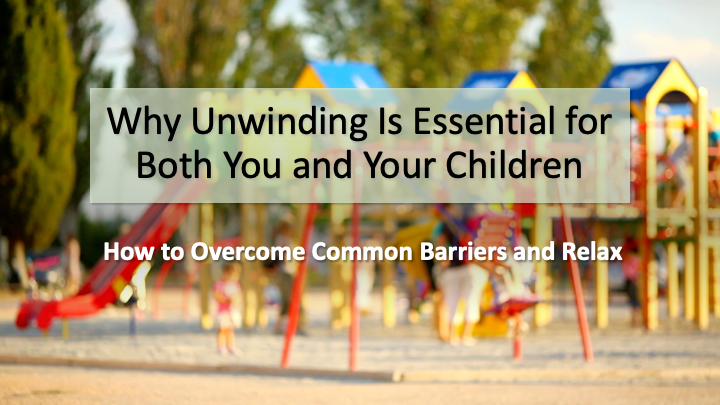
Why Unwinding Is Essential for Both You and Your Children
Overcome Common Barriers and Relax
We all know that unwinding is good for us. After all, think how wonderful it feels to relax after a long, difficult day! There’s no better way to shed stress or ease worry. Unfortunately, though, sometimes unwinding is easier said than done.
If you’re having difficulty unwinding, it’s time for intentionality in your subsequent actions. First, look at some barriers to letting go and what you can do about them.
If you’re having difficulty unwinding, it’s time for intentionality in your subsequent actions. First, look at some barriers to letting go and what you can do about them.
Current Events Have You Down
The problem with being plugged in every second of the day is we become very aware of what’s happening in the world. It can lead to many worries and stress about things happening worldwide, and it seems impossible to relax at the end of the day. The fix? Limit your media exposure. For example, make a point not to watch the news before bed or allow yourself only a certain amount of time to follow the news every day.
You Feel Like There’s Too Much to Do
The problem with being busy is that it’s always possible to get busier. While this can be great news for your business, it can wreak havoc on your ability to end the day and unwind. The fix? Create a schedule where you quit all extra activities for the day at a specific time. Then, if anything is unfinished, jot it down on tomorrow’s to-do list and let it go so you can unwind properly.
You Don’t Have Time to Unwind
This can be difficult, especially if you’re used to scheduling your day to be busy. The problem? You’re leading yourself straight to burnout. The fix? It’s pretty simple. Start planning time to unwind every day. Be strict with yourself about using it.
You Don’t Think You Deserve Time Off
Unfortunately, we were taught to be productive every minute of the day since we were children. It leads to many complicated feelings about taking time off, even to unwind at the end of the day. The fix? A reality check can do wonders here. Unwinding is a crucial part of being productive. Without rest, you can’t possibly do more later. Want to go even better? Spend time rewiring your brain to accept one straightforward truth: YOU DESERVE TIME TO YOURSELF. We all do—end of story.
All of these can be barriers for our children, too. For example, if your child’s usual way of being is interrupted, and you see changes in sleep, eating, or resting patterns, it could be that the local or world news worries them. They may need to talk and tell you how they are feeling. You may need to reassure them that you are there to keep them safe.
In today’s world, children’s schedules are packed so tight with things that we have been told are necessary to succeed. Children need time to unwind and be children. However, scheduling them with back-to-back activities or activities every evening after school is too much for many, if not all, children.
They deserve time off. They need time to unwind; they need time with you and your family; and, most importantly, they need you and family time. Even more importantly, they need you to set an example for them of what it means to be balanced in life.
Clarity about what is important to you and your family will help you choose how to spend your time. Don’t be influenced by what others tell you your child “should” do. Instead, relax, be your best self, and practice what you know is best for you and your family.
I invite you to sign up for our newsletter. It is a great way to get the Virtue of the Month and tips on relationships, parenting, and self-care. In addition, you’ll be the first to know about upcoming classes for successful families.
To sign up, visit the “Newsletter” section here on the website. Enter your email address, and you’ll receive our newsletter in your inbox on Wednesdays. I appreciate your interest in bringing out the best in your children and yourself. We look forward to keeping you informed through our newsletter!







